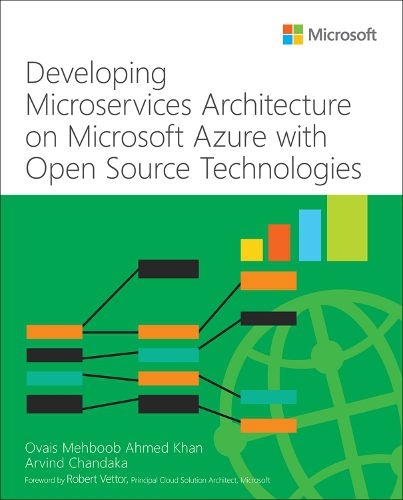Readings Newsletter
Become a Readings Member to make your shopping experience even easier.
Sign in or sign up for free!
You’re not far away from qualifying for FREE standard shipping within Australia
You’ve qualified for FREE standard shipping within Australia
The cart is loading…






Deliver microservices architecture, step-by-step: from defining business problems through development, deployment, and monitoring
Increasingly, organizations are modernizing application development by integrating open source technologies into a holistic architecture for delivering high-quality workloads to the cloud. This is a complete, step-by-step guide to building flexible microservices architecture by leveraging Microsoft Azure cloud services, together with key open source technologies such as Java, Node.JS, .NET Core and Angular. Through a realistic case study project, expert Microsoft engineers Ovais Mehboob Ahmed Khan and Arvind Chandaka guide you through every step of technical implementation required to achieve value: establishing end-to-end infrastructure, developing cloud-native applications, automating deployments, monitoring operations, and more.
Microsoft engineers Ovais Mehboob Ahmed Khan and Arvind Chandaka show how to:
Define application features and business requirements, and map them onto microservices using modeling techniques Design microservices solution architecture that enables high-quality workloads Develop an application front-end, and build microservices with open source technologies Leverage Azure Kubernetes Services for Docker container orchestration Use various patterns to build reliable and resilient microservices Enforce microservices app security, and use Azure AD B2C for user authentication/authorization Establish an API gateway that provides a unified front door to back-end microservices Set up continuous integration and deployment with Azure DevOps Monitor microservices with Azure Monitor and Azure Application Insights
About This Book
For everyone interested in developing microservices, including architects, engineers, and consultants
Will help IT professionals build new applications, modernize existing systems, migrate workloads, improve app management, and more.
$9.00 standard shipping within Australia
FREE standard shipping within Australia for orders over $100.00
Express & International shipping calculated at checkout
Deliver microservices architecture, step-by-step: from defining business problems through development, deployment, and monitoring
Increasingly, organizations are modernizing application development by integrating open source technologies into a holistic architecture for delivering high-quality workloads to the cloud. This is a complete, step-by-step guide to building flexible microservices architecture by leveraging Microsoft Azure cloud services, together with key open source technologies such as Java, Node.JS, .NET Core and Angular. Through a realistic case study project, expert Microsoft engineers Ovais Mehboob Ahmed Khan and Arvind Chandaka guide you through every step of technical implementation required to achieve value: establishing end-to-end infrastructure, developing cloud-native applications, automating deployments, monitoring operations, and more.
Microsoft engineers Ovais Mehboob Ahmed Khan and Arvind Chandaka show how to:
Define application features and business requirements, and map them onto microservices using modeling techniques Design microservices solution architecture that enables high-quality workloads Develop an application front-end, and build microservices with open source technologies Leverage Azure Kubernetes Services for Docker container orchestration Use various patterns to build reliable and resilient microservices Enforce microservices app security, and use Azure AD B2C for user authentication/authorization Establish an API gateway that provides a unified front door to back-end microservices Set up continuous integration and deployment with Azure DevOps Monitor microservices with Azure Monitor and Azure Application Insights
About This Book
For everyone interested in developing microservices, including architects, engineers, and consultants
Will help IT professionals build new applications, modernize existing systems, migrate workloads, improve app management, and more.